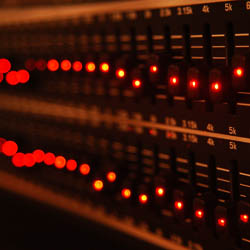Crafting a well rounded mix for your worship service takes skill, and the appropriate knowledge of the tools at hands.
One of the most important aspects of mixing for worship is getting the right vocal sound, which is easy to accomplish with some basic EQ if you know what you’re doing.
Before I get to the “how” part, let’s look at the “why.” The why is especially important if are EQ’ing a singer.
Vocals are EQ’ed for three primary reasons:
1. To correct problem frequencies
2. To add an effect, like a chipmunk voice, so the voice sound is noticeably different.
3. To place the vocal in the mix for the best fit, a.k.a “where it best sits in the mix.”
EQ’ing for those reasons should result in a sound that is better (or a better fit) than the original sound.
As a warning, do not EQ a singer’s voice so the sound produced sounds like it doesn’t belong to that person. This is distracting to the audience and rather insulting to the singer.
The exception here would be perhaps a dramatic performance where you are adding effects to a speaking voice, such as changing someone’s voice to sound like a chipmunk.
Correcting Problem Frequencies
First, let’s identify common vocal frequencies. Vocal frequencies range from about 75 Hz to 1100 Hz. This is the low end bass to the high soprano. Here is the breakdown, in Hertz, based on approximate frequencies;
• Bass: 75-300
• Baritone: 100-400
• Tenor: 135-500
• Alto: 180-700
• Soprano: 250-1100
These ranges do not imply frequencies above the upper limit are not used. Harmonics are present well above these listed frequencies and can be present as high as 8-10 kHz. Harmonics are produced from sine waves combining at different frequencies and amplitudes when a sound is created.
Therefore, a soprano singer could have frequencies cut out completely above the 1100 Hz mark but the sound will not be natural.
Correcting problem frequencies might need to occur because of a nasally sound, a muddy sound, the popping P’s and T’s, or a flat (dull) sound.
















